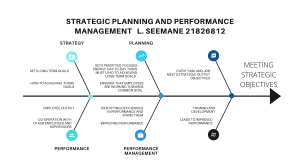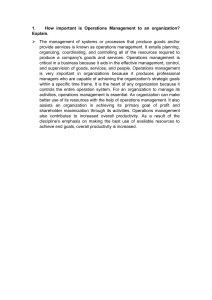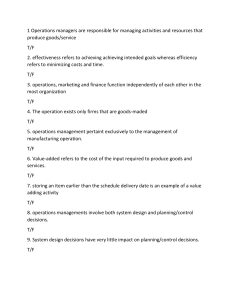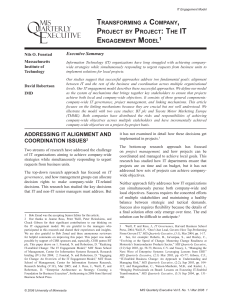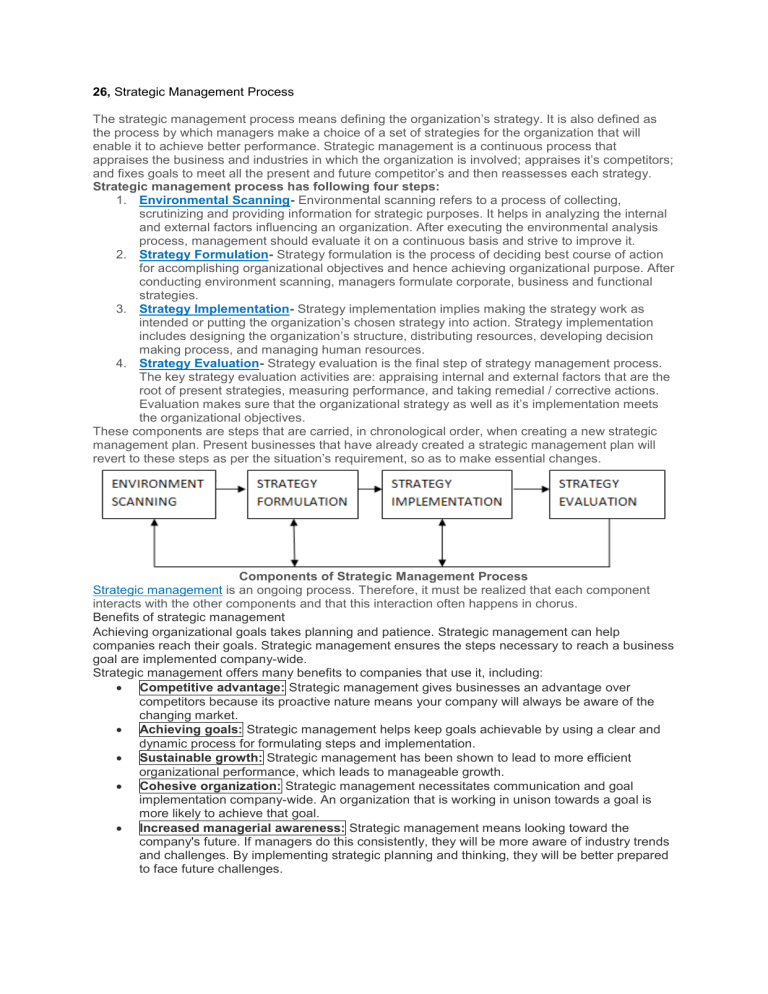
26, Strategic Management Process The strategic management process means defining the organization’s strategy. It is also defined as the process by which managers make a choice of a set of strategies for the organization that will enable it to achieve better performance. Strategic management is a continuous process that appraises the business and industries in which the organization is involved; appraises it’s competitors; and fixes goals to meet all the present and future competitor’s and then reassesses each strategy. Strategic management process has following four steps: 1. Environmental Scanning- Environmental scanning refers to a process of collecting, scrutinizing and providing information for strategic purposes. It helps in analyzing the internal and external factors influencing an organization. After executing the environmental analysis process, management should evaluate it on a continuous basis and strive to improve it. 2. Strategy Formulation- Strategy formulation is the process of deciding best course of action for accomplishing organizational objectives and hence achieving organizational purpose. After conducting environment scanning, managers formulate corporate, business and functional strategies. 3. Strategy Implementation- Strategy implementation implies making the strategy work as intended or putting the organization’s chosen strategy into action. Strategy implementation includes designing the organization’s structure, distributing resources, developing decision making process, and managing human resources. 4. Strategy Evaluation- Strategy evaluation is the final step of strategy management process. The key strategy evaluation activities are: appraising internal and external factors that are the root of present strategies, measuring performance, and taking remedial / corrective actions. Evaluation makes sure that the organizational strategy as well as it’s implementation meets the organizational objectives. These components are steps that are carried, in chronological order, when creating a new strategic management plan. Present businesses that have already created a strategic management plan will revert to these steps as per the situation’s requirement, so as to make essential changes. Components of Strategic Management Process Strategic management is an ongoing process. Therefore, it must be realized that each component interacts with the other components and that this interaction often happens in chorus. Benefits of strategic management Achieving organizational goals takes planning and patience. Strategic management can help companies reach their goals. Strategic management ensures the steps necessary to reach a business goal are implemented company-wide. Strategic management offers many benefits to companies that use it, including: Competitive advantage: Strategic management gives businesses an advantage over competitors because its proactive nature means your company will always be aware of the changing market. Achieving goals: Strategic management helps keep goals achievable by using a clear and dynamic process for formulating steps and implementation. Sustainable growth: Strategic management has been shown to lead to more efficient organizational performance, which leads to manageable growth. Cohesive organization: Strategic management necessitates communication and goal implementation company-wide. An organization that is working in unison towards a goal is more likely to achieve that goal. Increased managerial awareness: Strategic management means looking toward the company's future. If managers do this consistently, they will be more aware of industry trends and challenges. By implementing strategic planning and thinking, they will be better prepared to face future challenges.
